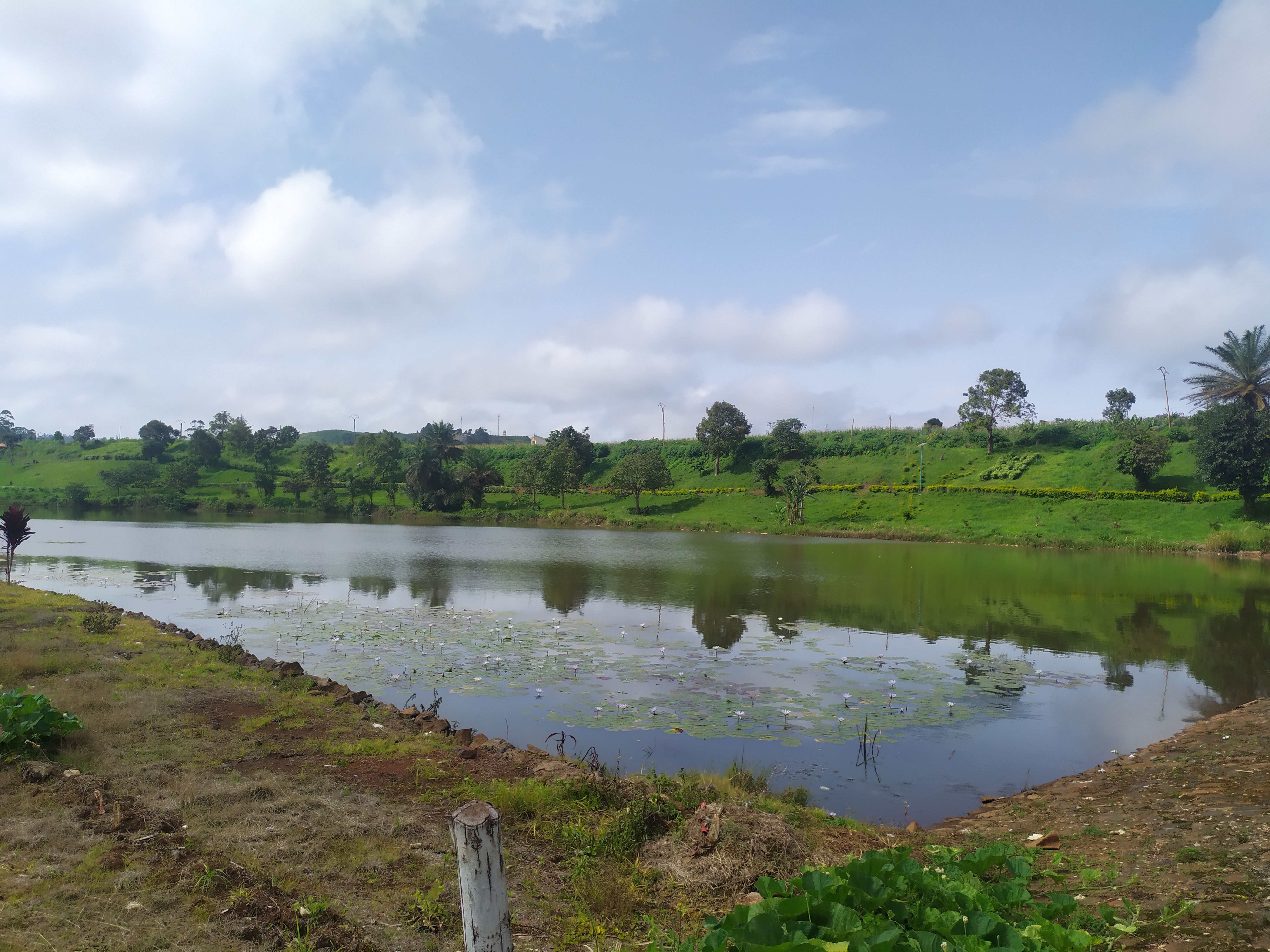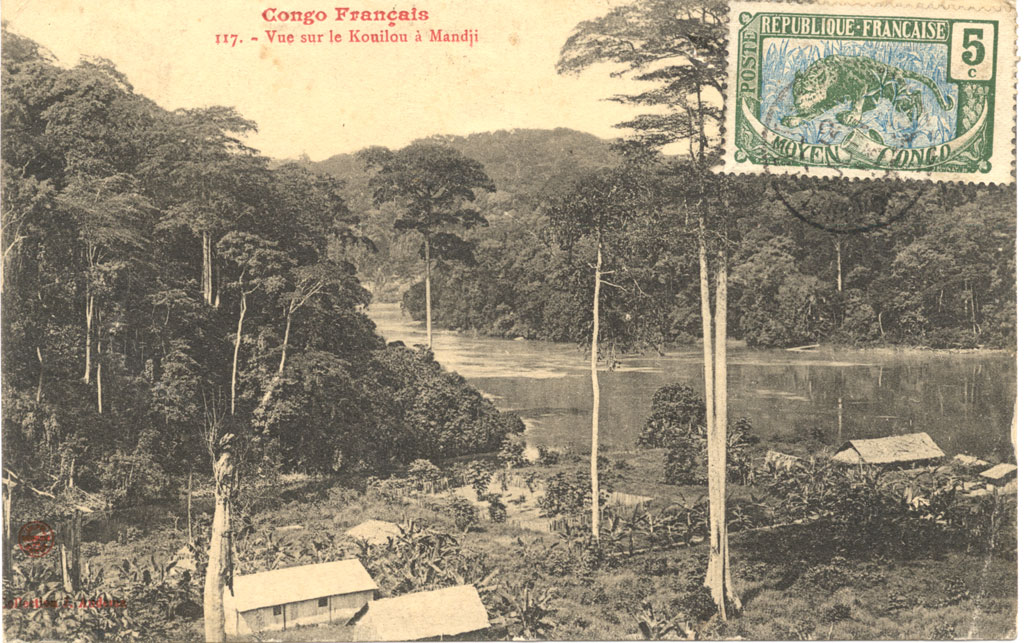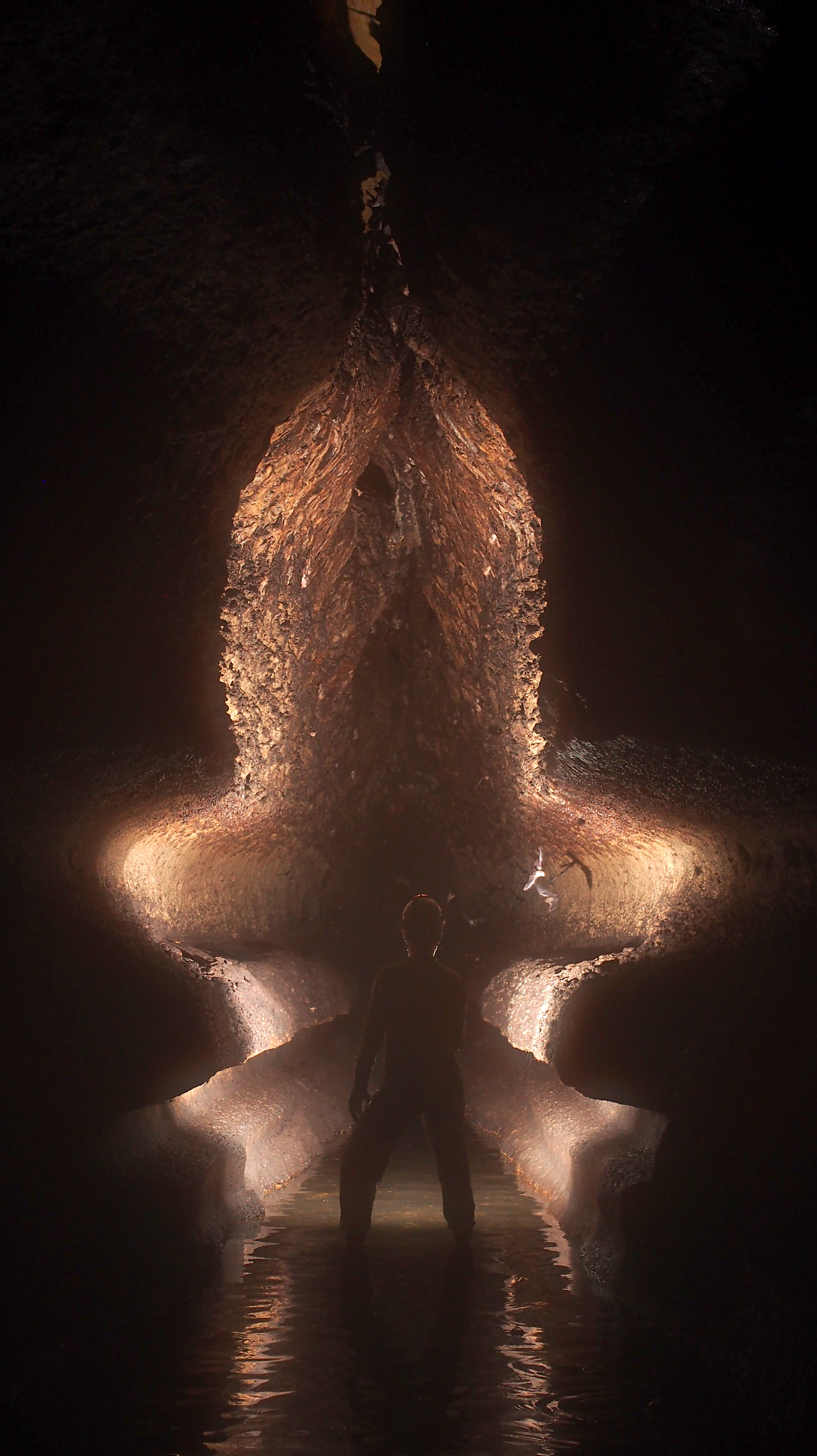|
Olivier Testa
Olivier Testa (born April 1, 1977) is a cave explorer, known for his discovery of the orange cave-dwelling crocodiles of Gabon, the Iroungou burial cave in Gabon, the discovery of unexpected caves in the volcanic Bamboutos mountains in Cameroon and several discoveries in Haiti. He has led or participated in over 40 caving expeditions in Africa, Asia and in the Caribbean. Early life Testa was born in Marseille, France, and grew up in the Alps, in Annecy, France, where he learnt mountain sports. After obtaining an engineer's degree at École Centrale Paris in 2000, Testa tried different jobs and worked 2 years at French Institute for Research in Computer Science and Automation (INRIA) ( Real-Time Scheduling), near Grenoble, France, from 2001 to 2003. Meanwhile, he was an active caver at the La Tronche caving club (FLT). He explored and practiced in many deep caves in Chartreuse Mountains and Vercors Massif, and started cave diving. Testa discovered Africa volunteering f ... [...More Info...] [...Related Items...] OR: [Wikipedia] [Google] [Baidu] |
Caving
Caving – also known as spelunking in the United States and Canada and potholing in the United Kingdom and Ireland – is the recreational pastime of exploring wild cave systems (as distinguished from show caves). In contrast, speleology is the scientific study of caves and the cave environment.Caving in New Zealand (from Te Ara: The Encyclopedia of New Zealand, Accessed 2012-11.) The challenges involved in caving vary according to the cave being visited; in addition to the total absence of light beyond the entrance, negotiating pitches, squeezes, [...More Info...] [...Related Items...] OR: [Wikipedia] [Google] [Baidu] |
Dschang
Dschang is a city located in the West (Ouest) Province of Cameroon, with an estimated population of 87,000 (est) in 2001, growing dramatically from 21,705 recorded in 1981. The 2006 Population is estimated to be 200,000 inhabitants. Dschang is the capital of the division of Ménoua. The Bamiléké are the predominant ethnic tribe. History Colonial era The documented history of Dschang began in 1895, when it was invaded by a German military mission. In 1909, the city replaced Fontem as the capital of a Germany military district. The region where Dschang now exists was then not the place of any major settlement but, instead, was an area that two bordering chiefdoms fought over. The name Dschang translates to "dispute" in the local language. Following Germany's defeat during World War I, Cameroon became both a British and French possession, France declared Dschang to be the capital of West Province, and developed the city's vacation resort in the 1940s. This resort now forms ... [...More Info...] [...Related Items...] OR: [Wikipedia] [Google] [Baidu] |
Mouila
Mouila is the capital of the Ngounié region of Gabon. It lies on the Ngounié River and the N1 road and has a population of about 20,000 people. Its main sight is Lac Bleu, a lake known for its bright blue water. Mouila is very spread out and has several markets and commercial centers. A taxi service runs in Mouila. Taxis are green and white and cost 200–500 Central African CFA francs depending on the distance traveled. Mouila is home to a huge range of Gabonese ethnic groups and is a major hub of commerce and travel. It is served by Mouila Airport. From Mouila, bush taxis may be obtained traveling to Ndende, Tchibanga, Lambaréné, Libreville and Lebamba. Climate Mouila has a tropical savanna climate (Köppen climate classification ''Aw''). Notable people * François Bozizé, a former president of the Central African Republic, is from Mouila. * Pierre Mamboundou Pierre Mamboundou (6 November 1946 – 15 October 2011) was a Gabonese politician. He was Pre ... [...More Info...] [...Related Items...] OR: [Wikipedia] [Google] [Baidu] |
Iron Metallurgy In Africa
The topic of early iron-metallurgy in Africa encompasses both studies of the technology and archaeology of indigenous iron-production. Some recent studies date the inception of iron metallurgy in Africa between 3000 and 2500 BCE. Evidence exists for earlier iron metallurgy in parts of Nigeria, Cameroon, and Central Africa, possibly from as early as around 2,000 BCE. Some evidence from historical linguistics suggests that the Nok culture of Nigeria may have practiced iron smelting from as early as 1000 BCE. The nearby Djenné-Djenno culture of the Niger Valley in Mali shows evidence of iron production from 250 BCE. The Bantu expansion spread the technology to Eastern and Southern Africa during 500 BCE to 400 CE, as shown in the Urewe culture of the Lake Victoria region. Iron has a number of advantages over copper, brass, wood, and stone. The use of iron ushered in an Iron Age in Africa, with the expansion of agriculture, industry, trade, and political power. In some African c ... [...More Info...] [...Related Items...] OR: [Wikipedia] [Google] [Baidu] |
Lastoursville
Lastoursville or Mandji is a city in east-central Gabon, lying on the Ogooué River, the Trans-Gabon Railway and the N3 road. It was founded as a slave depot named ''Mandji'', renamed ''Maadiville'' in 1883 and finally took its current name for François Rigail de Lastours in 1886. It grew around palm oil production and as an administrative centre, and soon became a major missionary centre. The town is also known for its caves. The town lies at an elevation of 206 m. Caves Occupying a 90-sq-km site, there are more than 40 caves identified, located in dense primary rainforest close to town. Traces of human activity dates back 7000 years, when the caves were used in rituals. World Heritage Status The caves were added to the UNESCO World Heritage A World Heritage Site is a landmark or area with legal protection by an international convention administered by the United Nations Educational, Scientific and Cultural Organization (UNESCO). World Heritage Sites ar ... [...More Info...] [...Related Items...] OR: [Wikipedia] [Google] [Baidu] |
Rhaphidophoridae
The orthopteran family Rhaphidophoridae of the suborder Ensifera has a worldwide distribution. Common names for these insects include cave wētā, cave crickets, camelback crickets, camel crickets, Hogan bugs, spider crickets (sometimes shortened to "criders", or "land shrimp" or "sprickets",) and sand treaders. Those occurring in New Zealand, Australia, and Tasmania are typically referred to as jumping or cave wētā. Most are found in forest environments or within caves, animal burrows, cellars, under stones, or in wood or similar environments. All species are flightless and nocturnal, usually with long antenna (biology), antennae and legs. More than 500 species of Rhaphidophoridae are described. The well-known Gryllidae, field crickets are from a different superfamily (Grylloidea) and only look vaguely similar, while members of the family Tettigoniidae may look superficially similar in body form. Description Most cave crickets have very large hind legs with "drumstick-shape ... [...More Info...] [...Related Items...] OR: [Wikipedia] [Google] [Baidu] |
Dwarf Crocodile
The dwarf crocodile (''Osteolaemus tetraspis''), also known as the African dwarf crocodile, broad-snouted crocodile (a name more often used for the Asian mugger crocodile) or bony crocodile, is an African crocodile that is also the smallest extant (living) species of crocodile. Taxonomy and etymology The second species has had a somewhat convoluted taxonomical history. It was first described as ''Osteoblepharon osborni'' by Schmidt in 1919, based on a few specimens from the Upper Congo River Basin in what is now the Democratic Republic of Congo. However, Inger in a 1948 paper found the specimens wanting of characteristics that would justify a generic separation from ''Osteolaemus'' and referred the specimens to '' Osteolaemus osborni''. In 1961, it was reduced to subspecies rank. A study of morphology published in 2007, and studies of DNA in 2009, 2013 and 2015 indicate that three distinctly different populations of ''Osteolaemus'' may merit full species recognition. These are ... [...More Info...] [...Related Items...] OR: [Wikipedia] [Google] [Baidu] |
Abanda Caves
The Abanda Caves are a cave complex in Gabon, located in the upstream of Fernan Vaz Lagoon. They were first mentioned by Dr. Marco Marti and Claude Werotte in the early 2000s, and fully explored during several caving expeditions by Oslisly, Testa, Sebag and Shirley. There are two independent cave networks: the Dinguembou cave (350m) and the Mugumbi cave (400m). Access to the horizontal passages is possible through vertical shafts of about 7m deep. They host large colonies of bats (Egyptian fruit bat, Sundevall's roundleaf bat, Giant roundleaf bat) estimated to more than 100,000 individuals. Picathartes nests have been observed at the entrances of the caves. The Caves of Abanda are known to host an endemic population of orange-colored cave-dwelling dwarf crocodiles. They were described by herpetologist Matthew H. Shirley after the first scientific expedition in the caves in 2010. These crocodiles live in complete darkness, they feed mostly on bats and cave crickets and swim in li ... [...More Info...] [...Related Items...] OR: [Wikipedia] [Google] [Baidu] |
Fernan Vaz Lagoon
Fernan Vaz Lagoon is a large lagoon on the Atlantic coast of Gabon. It is named for Fernão Vaz, the first European to reach it, and is known its wildlife and for the church at Mission Saint Anne, built in 1889 by Gustav Eiffel Alexandre Gustave Eiffel (born Bonickhausen dit Eiffel; ; ; 15 December 1832 – 27 December 1923) was a French civil engineer. A graduate of École Centrale des Arts et Manufactures, he made his name with various bridges for the French railway .... The main settlement on the lagoon's shore is Omboué. Lagoons of Gabon {{Gabon-geo-stub ... [...More Info...] [...Related Items...] OR: [Wikipedia] [Google] [Baidu] |
Nyanga Province
Nyanga is the southernmost of Gabon's nine provinces. The provincial capital is Tchibanga, which had a total of 31294 inhabitants in 2013 (more than the half of the province population). Nyanga is the least populated province of the nine and the other least developed, besides Ogooué-Ivindo. It is bordered by Ogooué-Maritime in the northwest, Ngounié in the north, and the Congo to the south (Kouilou Region) and east (Niari Region). The Atlantic Ocean—the lowest point in both Gabon and Nyanga Province—borders it in the west. Departments Nyanga is divided into 6 departments: * Basse-Banio Department (Mayumba) *Douigni Department ( Moabi) * Doutsila Department (Mabanda) * Haute-Banio Department (Ndindi) * Mongo Department (Moulengui-Binza) * Mougoutsi Department (Tchibanga) Statistics *Area: 21,285 km² *2-letter abbreviation/HASC: GA-NY *ISO 3166-2 ISO 3166-2 is part of the ISO 3166 standard published by the International Organization for Standardization (ISO ... [...More Info...] [...Related Items...] OR: [Wikipedia] [Google] [Baidu] |
Tchibanga
Tchibanga is a city in the Nyanga Province of southern Gabon, situated on the Nyanga River. It has an estimated population of 24,000 (2008). The town lies on the N6 road and is home to Tchibanga Airport and a market. It lies near the Ivela Falls. Tchibanga is the capital of the Nyanga province. Tchibanga is home to approximately 15,000 Gabonese people, but is also home to a sizeable refugee population from Congo-Brazzaville. The UNHCR runs an office there providing services for the refugees and locals. The majority of people living in Tchibanga, including most Congolese refugees, belong to the Bapounou ethnic group. Tchibanga sits on the banks of the Nyanga River. It is located in Gabon's southern grassland region and does not have the deep jungle environment of many Gabonese cities. Tchibanga has a thriving commercial district, a hospital, two high schools, a post office, a large Catholic church, and an airport. A small power station and a fresh water spring provide elec ... [...More Info...] [...Related Items...] OR: [Wikipedia] [Google] [Baidu] |
Democratic Republic Of The Congo
The Democratic Republic of the Congo (french: République démocratique du Congo (RDC), colloquially "La RDC" ), informally Congo-Kinshasa, DR Congo, the DRC, the DROC, or the Congo, and formerly and also colloquially Zaire, is a country in Central Africa. It is bordered to the northwest by the Republic of the Congo, to the north by the Central African Republic, to the northeast by South Sudan, to the east by Uganda, Rwanda, and Burundi, and by Tanzania (across Lake Tanganyika), to the south and southeast by Zambia, to the southwest by Angola, and to the west by the South Atlantic Ocean and the Cabinda exclave of Angola. By area, it is the second-largest country in Africa and the 11th-largest in the world. With a population of around 108 million, the Democratic Republic of the Congo is the most populous officially Francophone country in the world. The national capital and largest city is Kinshasa, which is also the nation's economic center. Centered on the Cong ... [...More Info...] [...Related Items...] OR: [Wikipedia] [Google] [Baidu] |







.png)